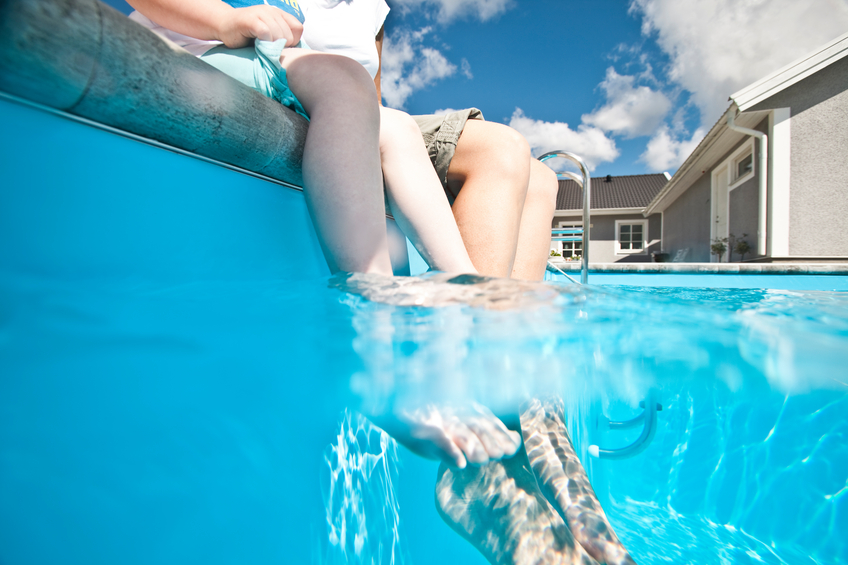Would you rub chemicals all over your body that can cause genetic damage to your cells that can lead to cancer? Of course not.
But a disturbing new study says that when you swim in a pool, you’re essentially immersing yourself in carcinogens.1
Many people think it’s the chlorine in pools that is dangerous. That’s not exactly true.
Scientists say chlorine itself is not the primary hazard. It’s the compounds that result when chlorine mixes with sweat, personal care products, and urine. Researchers call them disinfection byproducts, or DBPs. They are linked to genetic damage to cells in lab tests.
Other studies have found higher rates of bladder cancer and asthma in people who are around pools regularly.
Researchers from the University of South Carolina tested 28 water samples from seven pools and hot tubs. They found more than 100 different DBPs. As one would expect, the more use the pools or spas received, the higher the DBP concentration.2
Hot tubs were the worst. They had double the DBP levels of swimming pools.
Susan Richardson was co-author of the study. She explained that with hot tubs, “the warmer temperatures increase the reaction rate, forming these disinfection byproducts faster.”
The findings were published in the journal Environmental Science & Technology.
Indoor pools are more dangerous, Richardson said. That’s because DBPs mix with the air and become breathable around indoor pools, which have less ventilation than outdoor pools.
Richardson said she would never let her own child use an indoor pool regularly. DBPs cause a common lung condition called “swimmer’s asthma” that afflicts people who regularly use indoor pools.3
Protect Yourself and Your Family
There are ways to lower the risks of DBPs:
- Take it outside. Avoid indoor pools and hot tubs that are frequented by lots of people.
- Use a salt chlorination system. These systems convert salt to chlorine. They add chlorine at a steady rate. This results in a lower concentration of DBPs.4
- Add a mineral filter. They use silver and copper to kill bacteria and algae. This allows you to reduce your chlorine use by up to 50%. Less chlorine in the water means lower levels of DBPs.5
- Don’t overheat your pool. The higher the pool temperature, the more DPBs will be produced.
- Hit the showers. Encourage guests to shower before they enter the pool. This will get rid of some the compounds that interact with chlorine to make DPBs. Then shower again after swimming to rinse off DPBs.
Nothing is better on a hot day than hopping in the pool. And swimming is a fantastic form of exercise. But when you beat the heat, make sure you do it in water that is safe and healthy.
In Good Health,

Angela Salerno
Executive Director, INH Health Watch
Like this Article? Forward this article here or Share on Facebook.
References:
1https://consumer.healthday.com/fitness-information-14/swimming-health-news-282/clean-pools-might-harbor-other-health-hazards-study-711352.html
2http://pubs.acs.org/doi/abs/10.1021/acs.est.6b00808
3http://www.livestrong.com/article/474173-effects-of-chlorine-on-swimmers/
4http://www.fosters.com/news/20160606/maintenance-tips-for-your-pool
5http://www.seasonalstores.com/pooltips/the-straight-story-on-ionization-purification/

